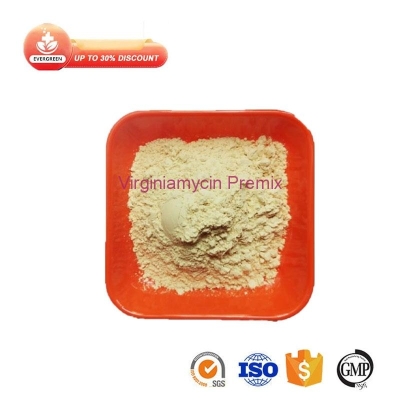New suggestion: the conception of agricultural tax reform
-
Last Update: 2008-11-03
-
Source: Internet
-
Author: User
Search more information of high quality chemicals, good prices and reliable suppliers, visit
www.echemi.com
Introduction: the general office of the State Council announced a number of measures to support the development of poultry industry Currently, an important part of promoting the reform of rural tax is to adjust agricultural tax This report points out that the regulations of agricultural tax have not met the requirements of market economy and agricultural development It suggests that the ultimate goal of agricultural tax reform should be to unify urban and rural tax system, cancel agricultural tax, adjust the distribution relationship between the state and farmers, so as to optimize the structure of agricultural products, promote the development of agricultural economy and effectively reduce the burden of farmers The characteristics and problems of Ag3 agricultural tax the regulation of agricultural tax of the people's Republic of China has been adjusted several times since its promulgation, but there is no major change, and it has been used up to now It abolished the former progressive tax system, implemented the different proportion tax system in different regions throughout the country, and continued to adopt the light tax policy of "stabilizing the burden, increasing production without increasing taxes" The light tax policy of Ag3 agricultural tax has greatly promoted the development of rural economy However, with the development of rural economy, the gap between the real tax rate and the nominal tax rate is growing Ag3, especially with the development of industrialization in China, the relative scale of agricultural tax revenue is getting smaller and smaller Even after the tax sharing system, the proportion of agricultural tax, as the main revenue of township finance, has declined year by year, basically losing the function of adjusting the income of rural residents and allocating rural resources The problems of Ag3 agricultural tax are closely related to its characteristics First, in terms of the object of tax collection, taking land as the main basis for tax collection does not meet the needs of development Second, in the tax system, it cannot be integrated with the industrial and commercial tax system Third, in the form of collection, agricultural tax is the only real tax in China Fourth, in terms of tax burden, the burden of farmers is increasing Fifth, in terms of financial contribution, the proportion of agricultural tax in financial revenue is getting lower and lower, while the cost of taxation is getting higher and higher Ag3 1 The proportion of agricultural tax in finance is decreasing day by day Ag3 agricultural tax used to be an important source of national financial revenue and accumulated a lot of funds for socialist construction In the early days of the founding of the people's Republic of China, the proportion of agricultural tax in the national financial revenue was 31.85% in 1950, and then decreased year by year, accounting for only 1.0% of the financial revenue in 2001 In some provinces and regions, the proportion is not only decreasing year by year, but also the absolute amount is decreasing year by year Even in some agricultural areas, the proportion of agricultural tax to finance is also declining Since the reform and opening up, the absolute amount of financial expenditure on agriculture has been increasing Ag3 from 1978 to 2001, the national financial expenditure on agriculture increased from 15.1 billion yuan to 151.6 billion yuan, a nine fold increase, with an average annual growth rate of 10.5%; however, the proportion of agricultural expenditure in total financial expenditure decreased year by year In 1978, agricultural expenditure accounted for 13.4% of the national fiscal expenditure, which decreased to 10% in 1990 and only 8% in 2001 If the state's expenditure on agriculture, excluding the expenditure of agriculture, forestry and water and other sectors in the agricultural expenditure, is really used for agricultural production, of which the expenditure on agricultural infrastructure accounts for the vast majority Compared with the situation that agriculture is the basic industry of the country and the agricultural population accounts for two-thirds of the national population, this kind of expenditure structure is extremely uncoordinated Investment has been reduced, while taxes from the countryside have been greatly increased From 1978 to 2001, agricultural taxes and taxes of township enterprises increased from 5.4 billion yuan to 259.4 billion yuan, an average annual increase of 20.3% In addition, there are some problems, such as the net outflow of credit funds from rural areas and the weakening of the national financial sector's support for agriculture According to incomplete statistics, only from 1996 to 2000, the outflow of funds from rural areas through credit channels increased from 191.2 billion yuan to 404.8 billion yuan What Ag3 needs to explain is that the state's investment in agriculture is not only reflected in the financial expenditure for supporting agriculture, but also in the expenditure of other departments and channels, such as poverty alleviation funds and the expenditure of agricultural development office Due to the multi investment, disordered management, and difficult to reflect the benefits, it is also difficult to calculate these expenditures together statistically According to the international experience, when the industrial output value exceeds the agricultural output value, it is necessary to end the extraction of agricultural surplus supporting industry and turn it into industrial back feeding and supporting agriculture In the early stage of industrialization, it is necessary for agriculture to provide capital accumulation for industry Although China's agricultural output value fell to only 43.3% of the total industrial and agricultural output value as early as 1957, at that time, in order to accelerate the construction of industrial system and national defense, we had to levy more agricultural taxes At present, China's agricultural share has been reduced to about 15% The position of industrial and agricultural output value in the total social output value has changed fundamentally Industry has the ability of self accumulation and can no longer rely on agricultural surplus In addition, the affordability of taxpayers is restricted by the level of productivity development The per capita income level of Chinese farmers is lower than the national average level, and their tax capacity is low At the same time, the establishment of tax system is restricted by the law of market economy, which is multifaceted The most obvious is to require the tax system to create conditions for fair competition of market subjects, promote the optimal allocation of resources in the country, and thus create possibilities for the growth of tax revenue We must attach great importance to the backward agriculture and the low income of farmers, which lead to the shrinking of tax sources Ag34 The collection cost of agricultural tax is high and the efficiency is low The collection cost of Ag3 agricultural tax is mainly reflected in the collection period (i.e summer harvest, summer seed and summer collection period) During the period of agricultural tax collection, it is impossible to complete the task only by relying on the agricultural tax personnel We must rely on the strength of the relevant government departments; in addition, we need some publicity funds, office funds, etc In addition to the above-mentioned direct collection costs, agricultural tax collection also includes more indirect costs that are difficult to count Such as the time spent by farmers to pay taxes These indirect costs are hard to quantify, but they are a factor that can not be ignored, such as the increase of farmers' burden and the slow development of rural economy At present, Ag3, the ultimate goal of Ag3 agricultural tax reform, has three types of taxes related to agriculture, agricultural products and farmers in the world The first category of Ag3 is the tax of taking farmers as ordinary citizens; the second category is the tax on the circulation of agricultural products, such as consumption tax, business tax, value-added tax, etc.; the last category is the tax on agricultural production At present, most countries have no such tax, only a few countries, such as China and India, have retained the agricultural tax No matter developed countries or developing countries, the vast majority do not tax agriculture as an industry, but for different agricultural products, collect various related taxes in the circulation of products, as for farmers, or collect or not collect income tax However, compared with developed countries, how to adjust our agricultural tax policy still needs to be studied No matter from the perspective of economic cost, social benefit or social equity, agricultural tax should be reformed appropriately and timely We believe that the ultimate goal of agricultural tax reform is to unify urban and rural tax system, cancel agricultural tax and adjust the distribution relationship between the state and farmers The opinions of the Central Committee of the Communist Party of China and the State Council on several policies to promote the increase of farmers' income just released clearly points out that we should further reduce the burden of taxes and fees on farmers, so as to create conditions for the ultimate realization of the unification of urban and rural tax systems Gradually reduce the agricultural tax rate This year, the agricultural tax rate will be reduced by 1 percentage point on the whole At the same time, the agricultural specialty tax excluding tobacco will be cancelled The opinion also points out that where conditions permit, the agricultural tax rate can be further reduced or exempted In addition, we believe that other supporting measures need to be taken, such as the reform of grass-roots government institutions, the reform of agricultural tax and the reform of the whole tax system, and the amendment of relevant laws and regulations Only in this way can China's agricultural tax reform truly meet the needs of the socialist market economy and the development of public finance.
This article is an English version of an article which is originally in the Chinese language on echemi.com and is provided for information purposes only.
This website makes no representation or warranty of any kind, either expressed or implied, as to the accuracy, completeness ownership or reliability of
the article or any translations thereof. If you have any concerns or complaints relating to the article, please send an email, providing a detailed
description of the concern or complaint, to
service@echemi.com. A staff member will contact you within 5 working days. Once verified, infringing content
will be removed immediately.







